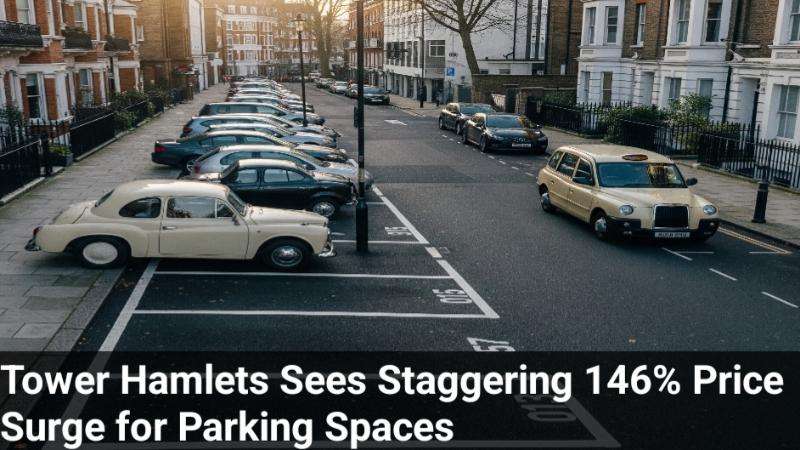Homeowners planning to put their property on the market are often focused on improvements that add value, but a surprising number of common features could be doing the opposite. Experts warn that certain elements within a home can not only deter potential buyers but also slash up to 20% off a property's market value, turning a swift sale into a prolonged headache. With the average UK house price currently around £237,318 (according to the Halifax House Price Index), this could mean a hefty loss of nearly £60,000.
"We all have something in mind when we begin a search for our next home, but there are certain features that for many people could be an absolute dealbreaker," explains Kirsty Oakes, head of product and marketing at Hammonds Furniture. "However, some of these features are surprisingly quick and simple to amend if you are looking to sell your house."
To help homeowners navigate the tricky waters of property sales, here's a comprehensive look at the features that can make buyers run for the hills:
The Top Devaluing Property Features (and Why They Scare Buyers Away):
Lack of a Bathtub / Weak Shower (Up to 20% Devaluation):
Despite modern lifestyles, the bathtub remains a critical symbol of a complete bathroom for many buyers. Hammonds Furniture research highlights that a significant portion of people are unwilling to compromise on having a tub, even if only for occasional use. Similarly, a weak or outdated shower is a major red flag, with nearly a third of prospective buyers put off by poor water pressure or an uninviting showering experience. This can easily lead to a substantial price reduction.
Poor Layout/Lack of Flow (Significant Impact):
A choppy floor plan with small, disconnected rooms, especially if it hinders natural light or creates awkward spaces, can be a major turn-off. Buyers are increasingly seeking open-plan living or at least a sense of fluidity between key areas. A home that feels cramped or illogically laid out requires costly renovations, which buyers will factor into their offer.
Outdated Decor and Fixtures (Up to 10-15% Devaluation):
While personal taste varies, excessively bold, old-fashioned, or poorly maintained decor can instantly age a property. Think avocado bathrooms, heavily patterned wallpaper, worn carpets, and brass fixtures from decades past. Buyers often struggle to look past these cosmetic issues, perceiving them as immediate expenses rather than easy fixes. They want to move into a home that feels fresh, or at least neutral enough to impose their own style without significant upfront work.
No Off-Street Parking / Limited Parking (Major Dealbreaker in Urban Areas):
In many urban and suburban locations, a lack of dedicated off-street parking is a significant drawback. Buyers are increasingly reliant on cars and are unwilling to face daily struggles for a parking spot, particularly in areas like London's Tower Hamlets or other densely populated boroughs where parking is already a crisis. This can be a complete non-starter for many families and can severely limit your buyer pool.
Small Kitchens / Lack of Modern Kitchen Features (Up to 10% Devaluation):
The kitchen is often considered the heart of the home, and a small, dysfunctional, or severely outdated kitchen can be a huge deterrent. Buyers expect certain modern conveniences, ample storage, and space for dining or socialising. A kitchen that requires a complete overhaul suggests a major financial outlay, which will be reflected in lower offers.
Poor Energy Efficiency (Increasingly Important):
With rising energy costs and growing environmental awareness, a low Energy Performance Certificate (EPC) rating is becoming a significant concern for buyers. Drafty windows, poor insulation, an old boiler, or a lack of renewable energy sources will mean higher utility bills. Buyers are increasingly savvy about this and will factor in the cost of future upgrades, or simply opt for a more energy-efficient property.
Evidence of Damp, Mould, or Structural Issues (Buyers "Run Away" Immediately):
Visible signs of damp, mould, cracks in walls, or other structural concerns are immediate deal-breakers. These issues suggest deeper, potentially very costly problems that require professional assessment and significant remedial work. Buyers will either walk away or demand a substantial reduction to cover these perceived (or real) expenses.
Over-Personalisation or Clutter (Subtle but Damaging):
While it might seem minor, a home filled with excessive personal items, quirky decor, or general clutter can make it difficult for buyers to envision themselves living there. It can also make rooms appear smaller and darker. While not directly devaluing, it creates a poor first impression and can lead to a lower offer as buyers struggle to see the home's true potential.
No Garden or Very Small/Unusable Outdoor Space (Especially for Families):
For many buyers, particularly families or those with pets, outdoor space is a high priority. A home with no garden, or one that is tiny, neglected, or very awkwardly shaped, can significantly reduce its appeal and value, especially in post-pandemic times when demand for outdoor areas has surged.
Poor Maintenance / General Neglect (Significant Price Chips):
A messy garden, peeling paint, leaky taps, broken fixtures, and general signs of neglect signal to buyers that the property has not been well cared for. This suggests that hidden problems might exist and that the buyer will face immediate repair costs. Buyers often inflate the cost of these repairs in their minds, leading to lower offers.
Proximity to Unfavourable Features:
While not internal, external factors like living too close to a noisy motorway, an industrial estate, a less desirable school catchment area, or even a graveyard can significantly impact buyer appeal and, consequently, property value.
Kirsty Oakes advises, "You'll never tick every box on everyone's list when you're selling a property, but it's important to appeal to the masses – think about reducing the hassle factor for potential buyers and focus on the smaller jobs that make a big impact."
For homeowners looking to sell, a critical assessment of these potential pitfalls and addressing them where possible could mean the difference between a swift, profitable sale and a prolonged, frustrating ordeal.








.svg)



